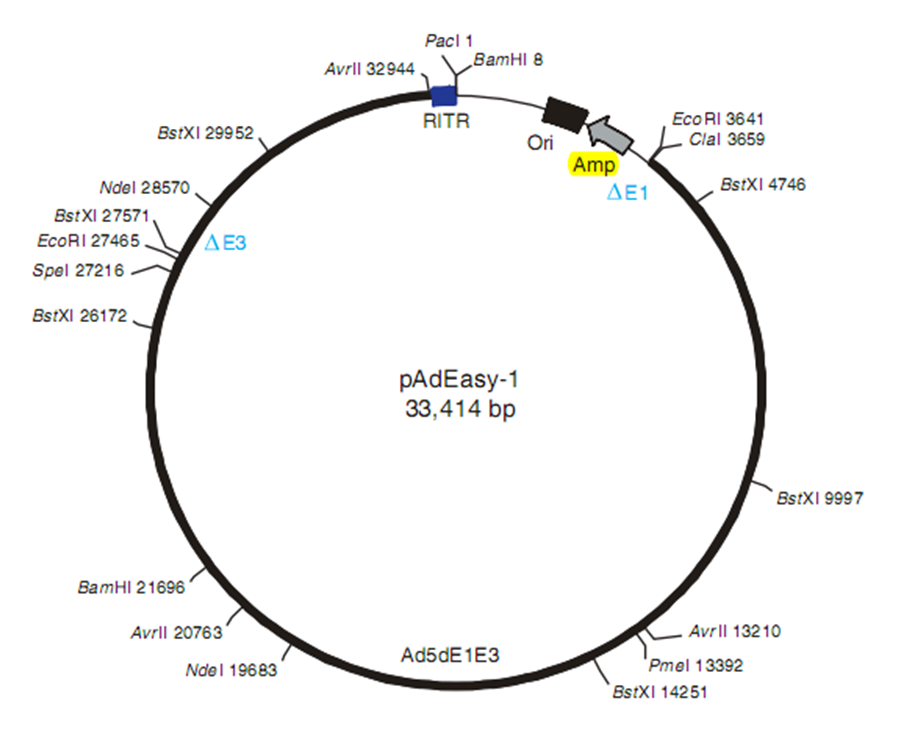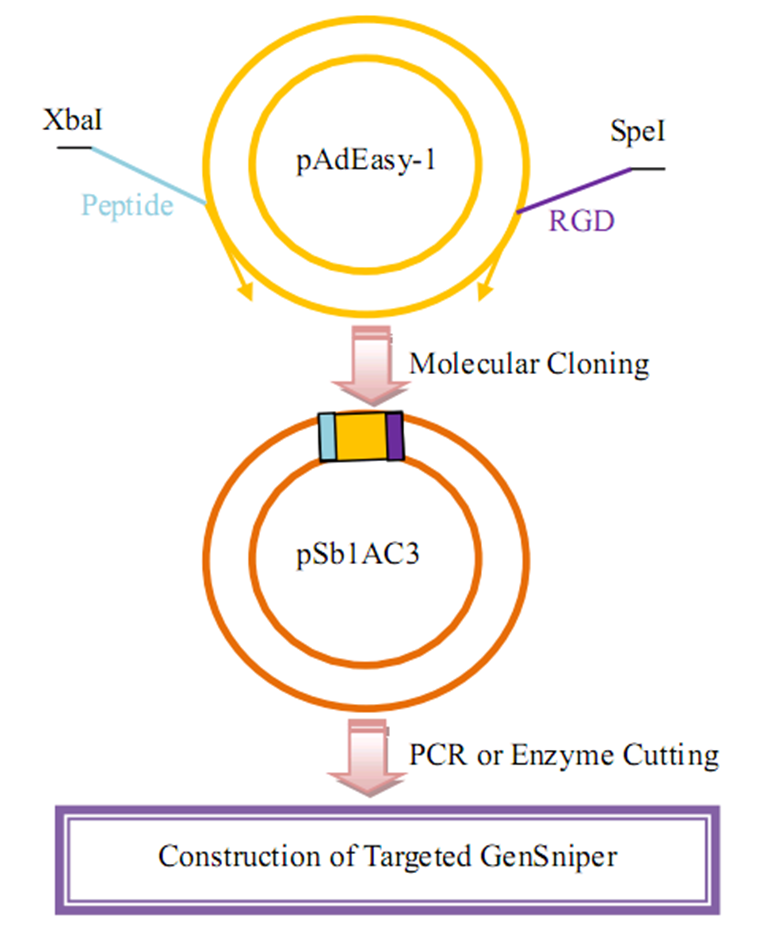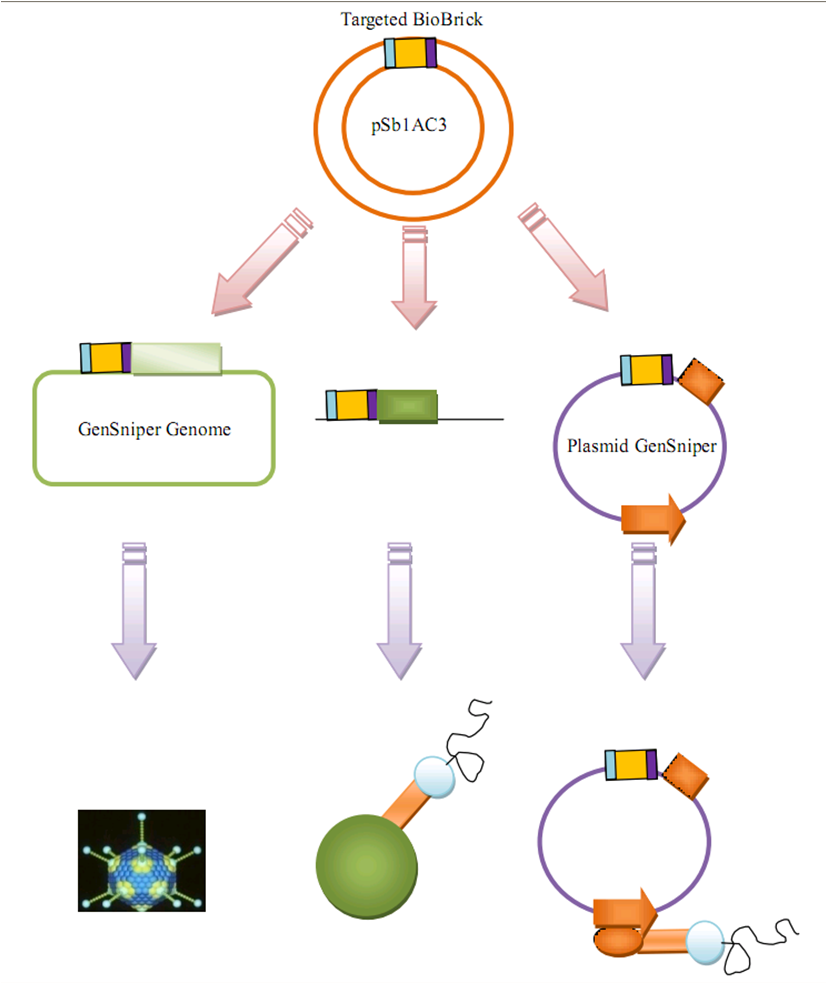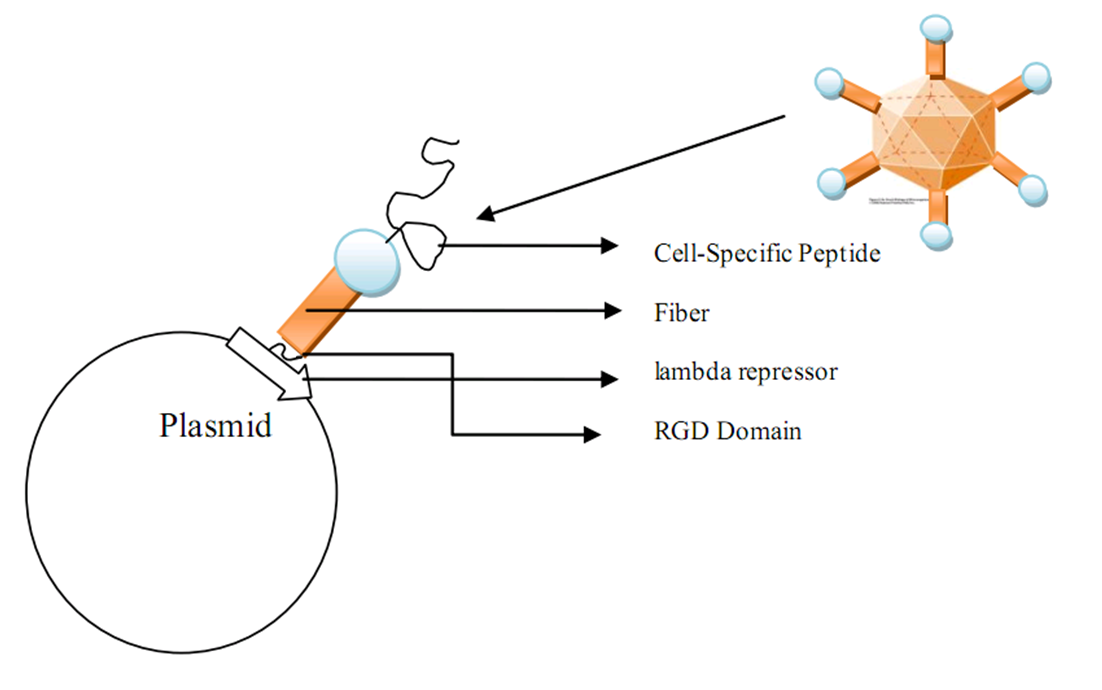Team:Tsinghua/Experiment3
From 2009.igem.org
GuoQiangChen (Talk | contribs) |
GuoQiangChen (Talk | contribs) (→Standardized Targeted Biobrick Construction) |
||
| Line 7: | Line 7: | ||
On the basis of this purpose, we build a biobrick encoding the "Peptide-Fiber shaft-RGD" sequence. This biobrick can be incorporated upstream a variety of proteins with different function. In this way, the targeted function can be modulized. | On the basis of this purpose, we build a biobrick encoding the "Peptide-Fiber shaft-RGD" sequence. This biobrick can be incorporated upstream a variety of proteins with different function. In this way, the targeted function can be modulized. | ||
| - | [[Image:pAdEasy1.png|600px|center|pAdEasy1]] | + | [[Image:pAdEasy1.png|600px|center|thumb| Map of pAdEasy1]] |
pAdEasy1, encoding the whole genome of adenovirus, is used for targeted biobrick cloning. The sequences of specific peptide (we use TAT peptide in our experiment) and RGD domain will be incorporated via PCR. | pAdEasy1, encoding the whole genome of adenovirus, is used for targeted biobrick cloning. The sequences of specific peptide (we use TAT peptide in our experiment) and RGD domain will be incorporated via PCR. | ||
| - | [[Image:Targeted Biobrick.png|600px|center|Targeted Biobrick]] | + | [[Image:Targeted Biobrick.png|600px|center|thumb|Standardized Procedure for Targeted Biobrick Construction]] |
The biobrick principle of synthetic biology allows us to characterize Targeted Biobrick function and apply Targeted Biobrick onto any functional proteins of desired function. For example, we can engineer Targeted Biobrick to a DNA binding protein to build a plasmid gene therapy vector as one of our dry lab project. This principle is similar to the established approach of zinc finger nuclease. | The biobrick principle of synthetic biology allows us to characterize Targeted Biobrick function and apply Targeted Biobrick onto any functional proteins of desired function. For example, we can engineer Targeted Biobrick to a DNA binding protein to build a plasmid gene therapy vector as one of our dry lab project. This principle is similar to the established approach of zinc finger nuclease. | ||
Revision as of 12:05, 21 October 2009
| Home | Background | Brainstorming | Design | Experiment | Results | Conclusion | Protocol |
|---|
Contents |
Standardized Targeted Biobrick Construction
As suggested in our project description, we aim at constructing a gene therapy vector with the targeted module able to be altered according to clinical use. Thus the targeted biobrick should be easy to manipulate for differentiated peptides with different specificity.
On the basis of this purpose, we build a biobrick encoding the "Peptide-Fiber shaft-RGD" sequence. This biobrick can be incorporated upstream a variety of proteins with different function. In this way, the targeted function can be modulized.
pAdEasy1, encoding the whole genome of adenovirus, is used for targeted biobrick cloning. The sequences of specific peptide (we use TAT peptide in our experiment) and RGD domain will be incorporated via PCR.
The biobrick principle of synthetic biology allows us to characterize Targeted Biobrick function and apply Targeted Biobrick onto any functional proteins of desired function. For example, we can engineer Targeted Biobrick to a DNA binding protein to build a plasmid gene therapy vector as one of our dry lab project. This principle is similar to the established approach of zinc finger nuclease.
Having the targeted biobrick at hand, we will generally conduct three groups of experiment for further characterization of our device. The following figure shows the general principle of the three experiments. Detail explanation will be shown.
Targeted Biobrick-pC Fusion
After the synthesis and identification of the GenSniper genome, we will genetically fused the open reading frame of C in bacteriophage lambda and modified fiber shaft from adenovirus. The packaged GensSniper viroins with Targeted Biobrick will be identified by electronic microscopy after purification.
Targeted Biobrick-eGFP Fusion
According to the decoupling principle of synthetic biology, we will also incorporate the targeted biobrick with eGFP before testing the specificity of the GenSniper with targeted biobrick. The Targeted Biobrick-eGFP Fusion protein will have the targeted function to deliver the GFP into desired cells. Thus, we can use this fusion protein to test the targeted efficiency of our Targeted Biobrick before engineering it onto the other part of the GenSniper. This accords the modulization principle of synthetic biology and will make this biobrick easier for further manipulation in targeted DNA, RNA, protein or drug delivery.
Plasmid GenSniper (Only for Drylab)
Given that different protein domains in the same peptide chain are relatively independent, different biobricks can also be fused for a recombination of functions (take zinc finger protein platform as a example).
If we engineer the Targeted Biobrick onto other protein with a variety of functions, the fusion protein will be capable of getting into specific cells to accomplish various functions. In our project, we want to test the targeted biobrick's function to deliver contain therapeutic genes into specific cells. The simplest way is to deliver naked plasmid into cells. Actually, naked plasmids can also be used as gene therapy vectors though the efficiency is low.
Thus, we designed a subproject where Targeted Biobrick is attached to a DNA-binding protein lambda repressor. The fusion protein will be able to bind to the plasmid that encodes it via lambda repressor binding region OR2. This recombinant plasmid also contains the desired therapeutic genes. In this way, the targeted protein-plasmid complex will form for targeted gene delivery.
We have to admitted that Plamid GenSniper, without viroin protection, is more vulnerable in vivo compared with the GenSniper constructed on bacteriophage lambda and adenovirus.
 "
"





